Last week was a treat for stargazers, with the appearance in the heavens of both a total lunar eclipse and a rare “Blood Red Supermoon.” MeisterSinger, the German watchmaker renowned for its single-handed timepieces, has recently released what may be the perfect timepiece for those so entranced by such cosmic phenomena that they could stare at one on their wrist all day long. Here is this week’s Watch to Watch, the out-of-this-world MeisterSinger Stratoscope.
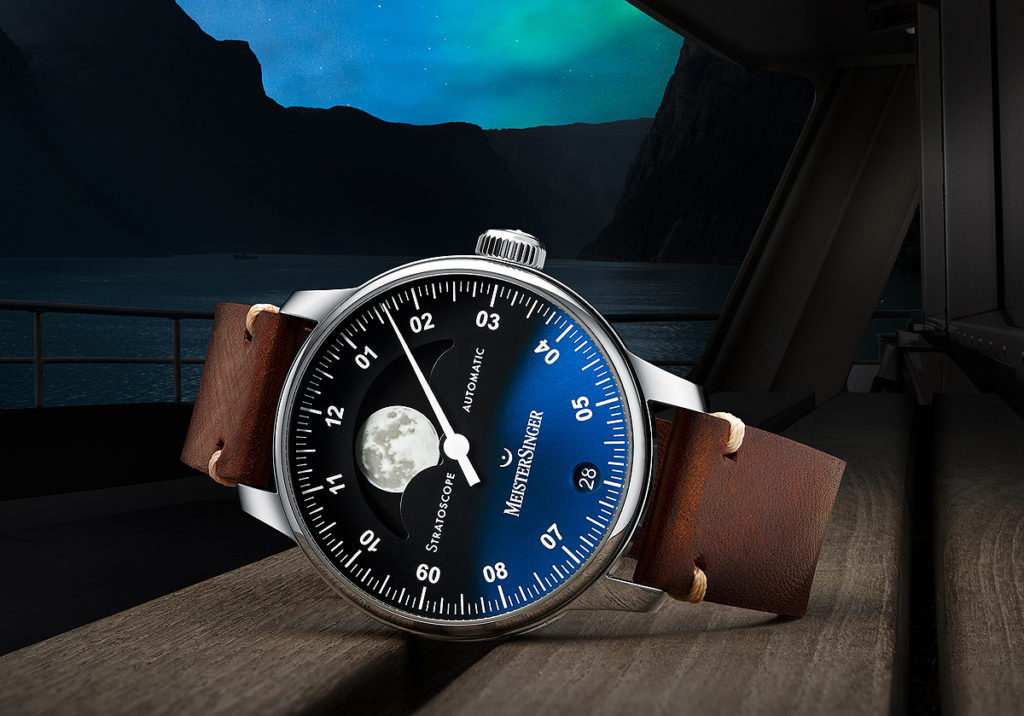
The watch could be regarded the latest evolution of the Münster-based brand’s first notable moon-phase timepiece, 2018’s Lunascope, which drew admiration across the watch connoisseur community for its central attraction, an exceptionally large photorealistic moon disk displayed in an accordingly spacious, starry aperture that occupied the top half of the dial. The Stratoscope goes even bigger, with a steel case measuring a substantial 43 mm, 3 mm larger than the Lunascope’s 40-mm case; and more ornate in its dial treatment, with a gradient effect from jet black to shimmering shades of blue that calls to mind the aurora borealis visible in the Earth’s far northern reaches.
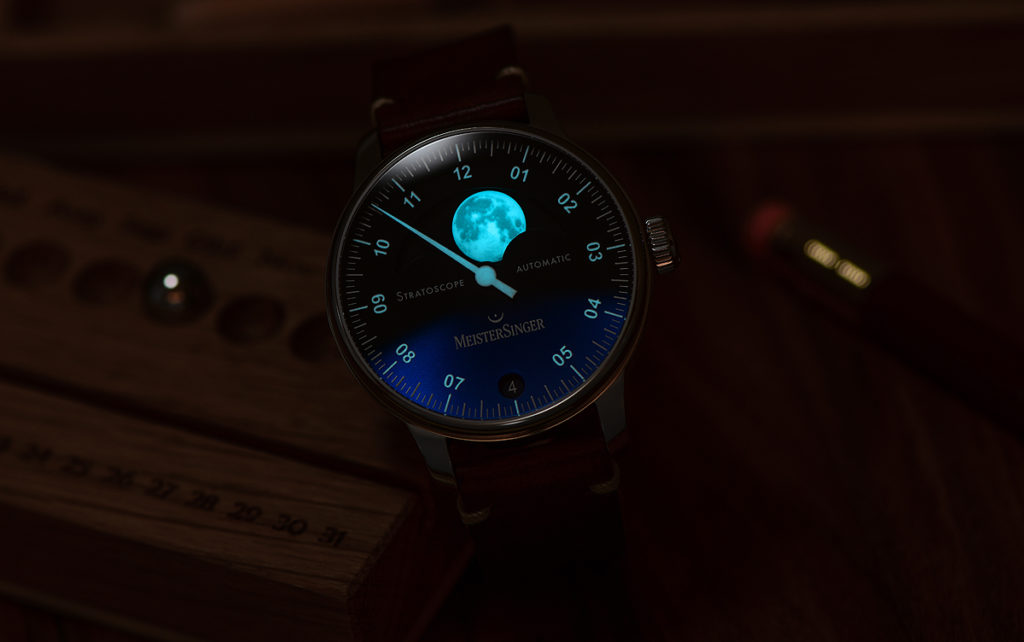
The photorealistic moon is coated with luminous material, as are the hallmark instrument-needle-shaped central hand that displays the time on the outer 12-hour scale. The numerals on the scale, also luminous-coated, are divided by five-minute markers for a clever, albeit not the most precise, indication of the time. Parallel to the wide, black, moon-phase aperture at the top is a smaller, round aperture at 6 o’clock for the date, its white numerals etched on a black disk but not luminous.

While the reading of the time on the single hand and subdivided 12-hour track is not as hyper-accurate as on a two-handed or, better yet, three-handed watch — MeisterSinger takes pride in its timepieces conveying a “tranquil sense of time,” after all — the astronomical precision of the moon-phase indication is uncommonly high, especially for a watch at this price range. In reality, the average moon cycle around the Earth lasts 29 days, 12 hours, 44 minutes, and 2.9 seconds, but most watches with the lunar complication round this figure down to 29.5 days via the movement. which means it deviates by eight hours per year and requires correction by one complete day every third year. In theory, kept fully wound, the Stratoscope won’t require an adjustment until 122 years have passed.
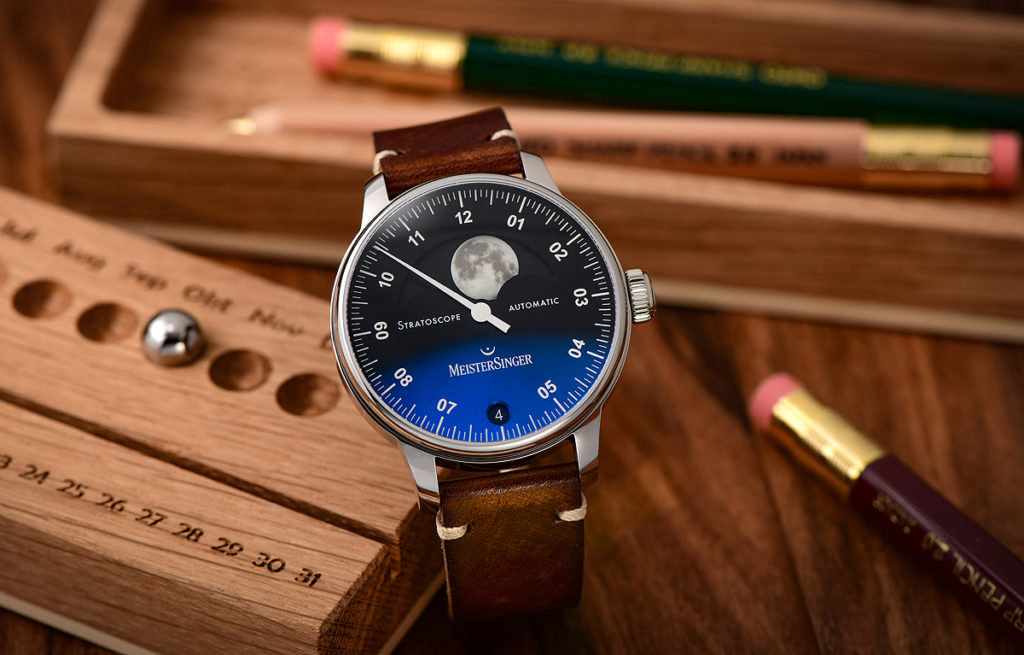
Responsible for this impressively accurate astronomical complication is a Swiss-made, automatic movement called MS Luna, based on the Sellita SW 220 and on display behind a sapphire exhibition caseback. Beating at a frequency of 28,800 vph and running in 25 jewels, it stores a fairly standard power reserve of 38 hours. The Stratoscope is delivered on a no-nonsense dark brown leather strap that attaches to the wrist with a simple yet sturdy steel pin buckle.
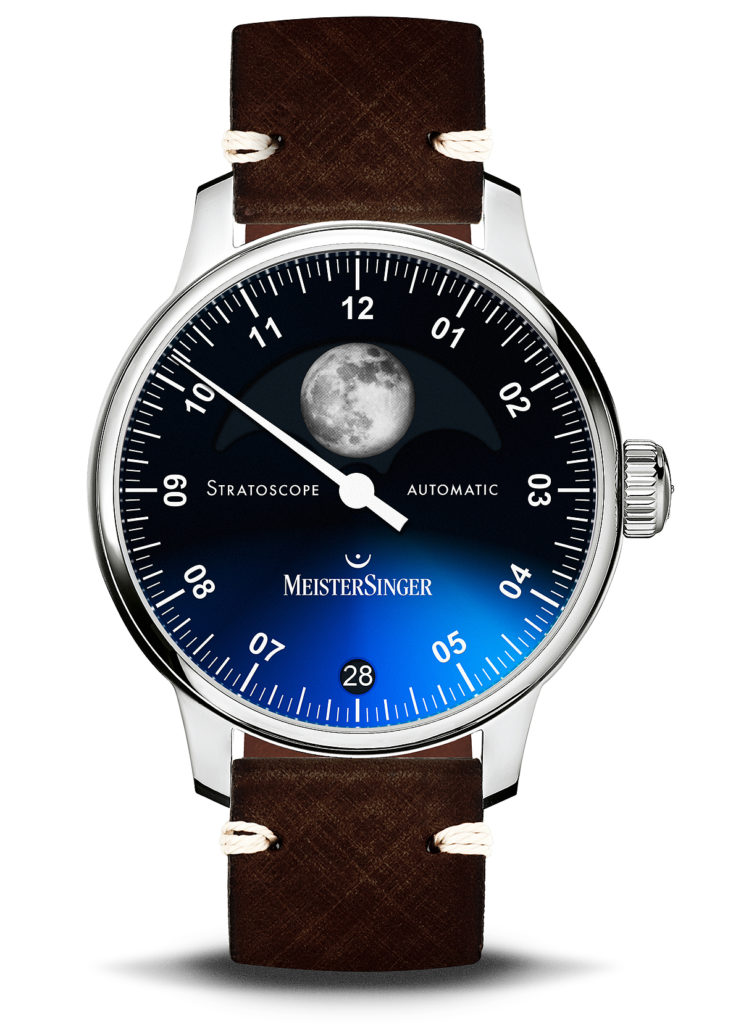



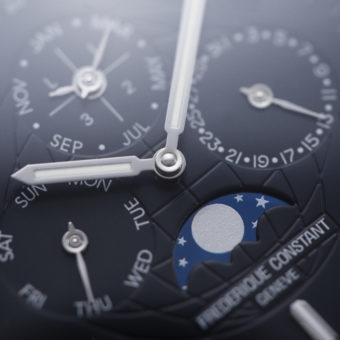

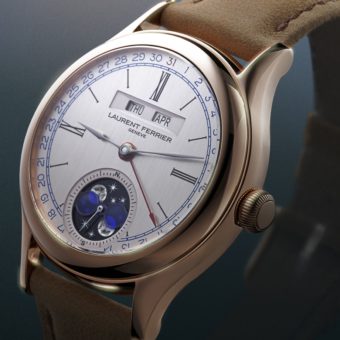
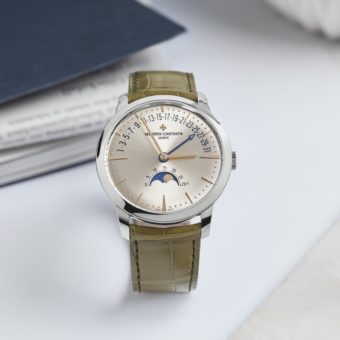
I think watches that have moon phases and unusual movements such as this is amazing. I am not interested in stop watch functions but I can understand those that do. This is precision to the next level in a moon phase that I would stare at all day. But the night is when this watch comes alive. Can you please tell me what the price is that I probably can’t afford. Thank you MeisterSinger for an amazing watch.
What’s the name of the wooden calander at the fourth picture of this article?
Best regards,
Mark Baan
Hi Mark, I think you mean this one: https://www.manufactum.ch/ewiger-kalender-eiche-ahorn-a32022/